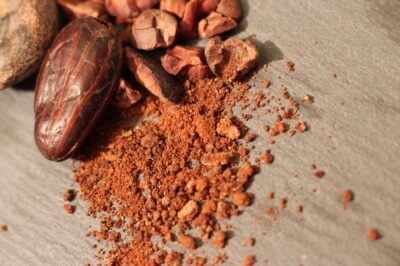Nature Notes:

Good Riddance 2020 – Welcome 2021
Happy New Year, Everyone!
What a strange and difficult year it has been! The Corona-virus pandemic has dominated the news almost from the very beginning of the year, and right up to the end. We are still in the midst of a devastating spike, with both, the danger of an even more virulent version of the virus now in widespread circulation, and several vaccines ready to be administered.
The virus has affected everybody, but in very different ways, depending on age-group, occupation, pre-existing conditions, and where you happen to live. Not only those who actually got sick with it have suffered. The emotional trauma of losing family members and loved ones, of losing a job and one’s livelihood, of finding yourself alone due to social distancing rules, or, crammed together into too small a space with the kids, and no-where to go…it has all taken its toll. We will pay the psychological price for the events of this year for some time to come.
But it hasn’t been all bad for everybody. Many people have rediscovered the importance of nature and the meaning of the ‘little things’ in life. We have leapfrogged into the digital age as schools and businesses have moved many of their operations online. What would have been unthinkable a year earlier has now become a commonplace reality. Many have discovered new interests and learned new skills with the help of online tutorials and MOOCs.
Meanwhile, wildlife has had a chance to recover, a bit, in places that are normally overrun with tourists.
The big question is, how will we rebuild? My hope, and wish for the new year is that we will learn from this experience and re-build a better, greener, more sustainable, and more equitable future for us all.
In this spirit, I wish you, my lovely reader, hope, health, and happiness for 2021!
Blessed Be
Kat
P.S. If you are interested in what the stars have in store for us in the New Year, check out my post at Astro-Insights for the year ahead.
Current issue

Gardening Jobs in May
Gardening Jobs in May
What gardening jobs are there to do in May? Where I live, April has been unusually cool and wet. I didn’t get all my April jobs done, and my ‘gardening jobs agenda’ for May is rather full. The wheel of the year is turning, and the garden does not wait.
Potatoes
If you planted all your potatoes in April, they are probably developing their first leaves by now. It’s time to earth them up now. Cover the leaves with soil, and only let the tops peek out. Repeat this process regularly as the plants grow and develop.
Sweet Corn
If you are planting sweet corn, you can now sow them in deep pots indoors. That will give them a head-start. Transplant them to a sunny spot in June.
Beans
Once there is no more risk of late frosts, you can sow all kinds of beans outside (runner, broad, dwarf). They like a sunny spot, but not too hot. Protect them from the slugs and snails—young bean shoots are their favourite snack. If slugs are a big problem, start the plants in seed trays and transplant them only once they are strong enough to withstand a slug attack.
Warmth-loving plants: Tomatoes, Peppers, Courgettes, Aubergines
Your tomato, aubergine and pepper plants are probably growing fast now. There comes a point when they seem to yell, ‘Get me out of here and plant me into the garden!’ Resist the temptation unless there is no more danger of late frosts in your growing zone. But, to appease them, you can harden them off. Take them outside during the day, but bring them back in at night until night temperatures are reliably around 10 °C.
You can also still sow cucumbers and melons—but keep them warm and protected for now.
Salad Veg and Greens
Sow batches of salad vegetables like radishes, lettuce, Swiss chard and Arugula/Rocket, to ensure a continuous supply.
Root crops
You can still sow root crops such as carrots, beetroots, leeks and turnips.
Winter Veg
Sow Leeks and brassicas for overwintering. It is best to start them off indoors to protect them from slug- and insect attacks.
Kitchen Herbs
It is also the perfect time to sow warmth-loving herbs such as basil and coriander. Protect them against attacks from ravenous slugs.
Weeds
May is lush! Everything sprouts and grows – including the weeds. But no need to curse them – if you can’t beat them, eat them! Check your garden weeds to see if they are edible and could go into a ‘foraged’ dinner. Bishop’s Weed, Stinging Nettles, Ground Ivy, Wild Garlic and Dandelion are all excellent in the ‘wild food cuisines’.
Flowers
Sow annuals like Californian Poppies, or nasturtiums in any gaps in your borders for extra colour in the summer. The bees and insects will thank you.
Maintenance Jobs
There are always maintenance jobs that need to be taken care of:
- If you have a pond, check for pondweed and algae and clean it out if necessary.
- Build supports for climbing plants.
Keep bird feeders and birdbaths clean.
Happy Gardening!
Check out SeedsNow for your organic gardening supplies.
#Ads
Disclosure: To support the website, I receive a small commission from qualifying purchases readers like you make on the affiliate site(s) linked to in this article, without any extra cost to you.
Plant Profile:

12 amazing superfood properties of Cacao
Medicinal and Therapeutic Properties of Cacao
This article is about some surprising medicinal benefits of real Cacao – the stuff that chocolate is made of.
It may come as a surprise, but Cacao is actually pretty healthy. (It’s my favourite ‘superfood’. 🙂
If you are interested in the history of Cacao and how we have come to love chocolate so much, take a look at this article about the cultural history of chocolate.
CACAO BEANS
PARTS USED: Dried seeds and seed shells.
HARVEST: Cacao pods take about 5-6 months to mature. The harvest occurs twice a year, from September to February and May/June, even though there is always ripe and unripe fruit on the same tree.
CONSTITUENTS: Fat, Amino Acids, Alkaloids (Theobromine, Caffeine), Riboflavin, Niacin, Thiamine, Calcium, Iron, Potassium, Magnesium, Vitamins A, C, D and E, polyphenols.
ACTIONS: Diuretic, stimulant, aphrodisiac, anti-depressant, nutritive anti-inflammatory, antioxidant
Crushed Cacao Beans
Image by janiceweirgermia from Pixabay
Diuretic
In Central America, a tea made from crushed Cacao seed shells called ‘nibs’ is used as an effective diuretic. A strong flow of urine is a sign of health and vigour, and any substance that produces this effect is praised as an aphrodisiac, enhancing male potency.
Anti HIV-properties
A pigment extracted from the husks has anti-HIV properties. In vitro studies have demonstrated that polymerized flavonoids present in the husks reduce the damaging effects of HIV. Apparently, they prevent the virus from entering the cells (Unten et al. 1991). But once inside the cell, the virus replicates normally.
Anti-inflammatory
Cacao is incredibly rich in polyphenols, antioxidant flavonoids that have a powerful anti-inflammatory effect.
Animal studies also suggest that Theobromine and Theophylline can ease inflammatory conditions of the respiratory tract, such as asthma, by dilating the lungs and thus helping to relax the air passages.
But unfortunately, most of them are lost due to the standard methods used to process Cacao Beans.
Cardio-Vascular support
Apparently, eating chocolate can be good for your heart health! In 2015, a study found that habitual chocolate consumption can reduce the risk of cardiovascular health issues, providing it is of high quality with a high cacao content. (2)
Cacao can relax and widen the arteries, thus reducing blood pressure and improving blood circulation. Combined with its ability to reduce ‘bad’ cholesterol, it can help prevent heart attacks and strokes.
Skincare from within
The Cacao phenols are also good for the skin. They improve blood circulation to the peripheral cells and improve the smoothness of the skin by helping to hydrate it from within. Long-term use is also said to protect the skin from the harmful effects of the sun.
Mood enhancing
The higher the Cacao content, the better it is for your well-being. Have you ever wondered why you are craving chocolate when doing demanding mental work? It’s your body telling you what it needs: High Cocoa chocolate (min. 65%) has nutritional and stimulating properties that make it a good ‘pick-me-up’.
The flavonols in Cacao improve mood, alleviate symptoms of depression and reduce stress. One study of pregnant women even showed this stress-reducing effect to be conferred to the babies. It is also popular as comfort food to soothe PMS symptoms. Another study showed that older men can benefit from the regular consumption of high Cacao content chocolate, reporting improved health and well-being.
Cognition
Even better, high Cacao content chocolate improves cognitive functions by increasing the blood flow to the brain. The beneficial flavanols can also cross the blood-brain barrier and directly benefit the neurons. For those suffering from cognitive impairments or neuronal conditions such as Alzheimer’s, or Parkinson’s, high Cacao content chocolate is brain food.
The findings are promising, suggesting that more research is warranted.
Blood-sugar regulation
High Cacao chocolate can even have a positive effect on Type 2 Diabetes symptoms. The unexpected findings showed that flavanols can slow the carbohydrate metabolism and uptake in the gut, while stimulating insulin secretion, lowering inflammation and aiding the transfer of sugar from the blood to the muscles.
Weight loss
Interestingly, high cocoa content chocolate actually has a positive effect on the body mass index (BMI). Chocolate eaters (min 81% cocoa) lose weight faster than people who do not eat chocolate.
Anti-Cancer
Several animal studies indicate that a flavanol-rich Cacao diet lowers the risk of cancer – especially breast, pancreatic, liver and colon cancer and leukaemia. However, more research is needed.
Immune system stimulation
Another counterintuitive finding is that Cacao contains antibacterial, anti-enzymatic and immune-stimulating compounds that can have a beneficial effect on oral health.
NOTE
It must be stressed, that all of these benefits only apply to high cocoa content chocolate that is very low in sugar, or without sugar. The common candy bar has NO health benefits. On the contrary, chocolate candy can be harmful.
(In case you are confused about flavonoids, flavanols and flavanols, they are actually different compounds. Take a look at this article to help clear up the confusion.)
References:
(1) Unten, S., H. Ushijima, H. Shimizu, H. Tsuchie, T. Kitamura, N. Moritome, and H. Sakagami. 1991. Effect of cacao husk extract on human immunodeficiency virus infection. Letters Appl. Microbiol. 14:251-254.
(2) (Kwok CS, Boekholdt SM, Lentjes MA, Loke YK, Luben RN, Yeong JK, Wareham NJ, Myint PK, Khaw KT. Habitual chocolate consumption and risk of cardiovascular disease among healthy men and women. Heart. 2015 Aug;101(16):1279-87. doi: 10.1136/heartjnl-2014-307050. Epub 2015 Jun 15. Erratum in: Heart. 2018 Mar;104(6):532. PMID: 26076934; PMCID: PMC6284792.)
#Ads
Disclosure: As an Amazon Associate, I earn from qualifying purchases on Amazon and other affiliate sites.
More articles:
No Results Found
The page you requested could not be found. Try refining your search, or use the navigation above to locate the post.



